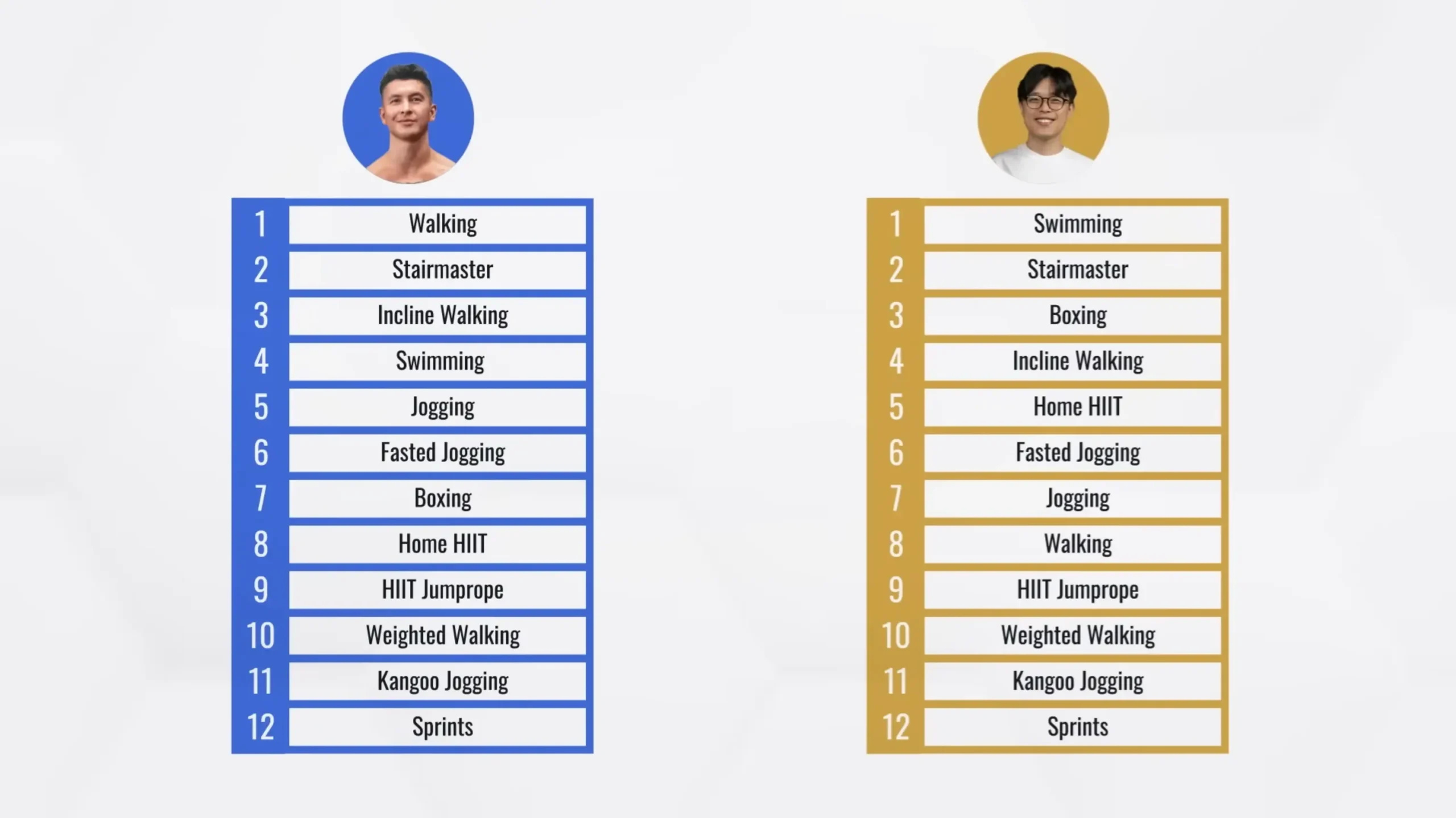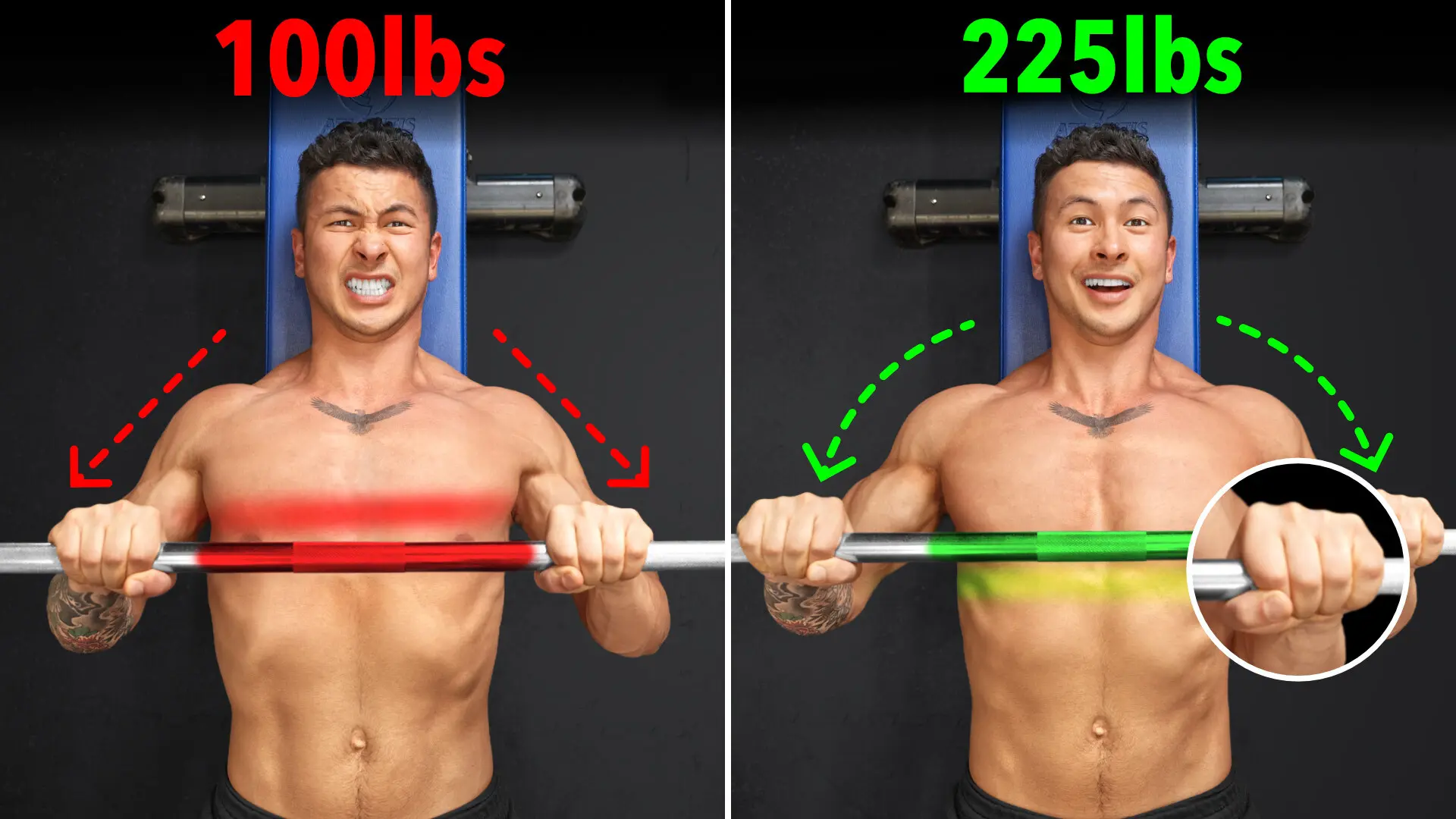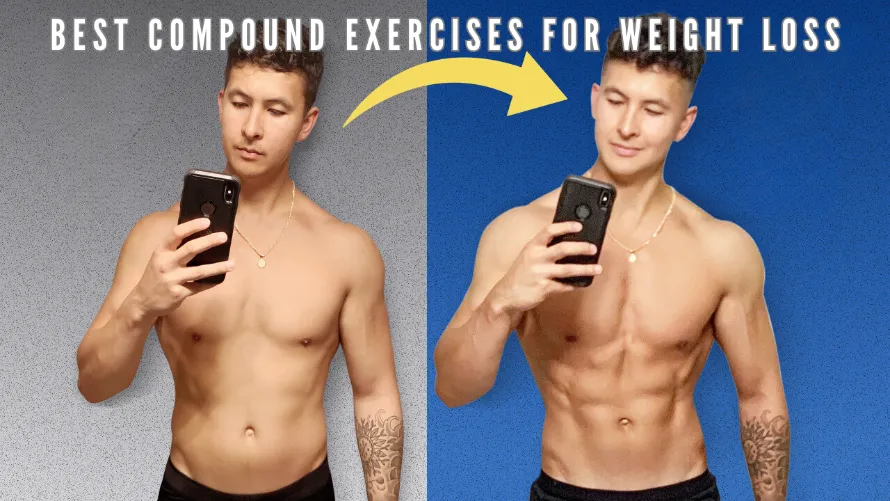
Compound Exercises For Weight Loss | Built With Science
What Are The Best Compound Exercises For Weight Loss?
So, you’ve decided to lose weight, and you’re working hard in the gym. Great.
To help you maximize your resistance training’s calorie-burning potential (potentially translating to quicker weight loss results), let’s make sure you’re doing the right kinds of exercise.
Compound exercises.
These multi-joint exercises target multiple muscle groups simultaneously, helping you either pack on or maintain muscle mass in a more time-efficient manner than isolation movements.
Since muscle mass is more metabolically active (i.e., burns more calories) than fat mass, this will raise your metabolic rate (even if just by a little) — nudging you into the deficit side of things with regard to your daily calorie balance.
And that’s not the only reason you should strive your hardest to maintain or build muscle mass while trying to lose weight.
See: muscle mass is key for appetite regulation during a deficit. In fact, there’s plenty of research showing that the more lean mass you lose during a diet, the more hunger you tend to experience later on … and the higher likelihood that you’re actually going to regain the weight you’ve lost. Yikes.
But which compound exercises should you do, specifically? Continue reading because, in this article, I share:
- The 10 best compound exercises for weight loss
- 3 full-body workout sessions based on those exercises you could copy-and-paste and implement right away
- What else you need to do to lose weight successfully in less time
Now, let’s start with the first compound exercise.
#1: Barbell Back Squat
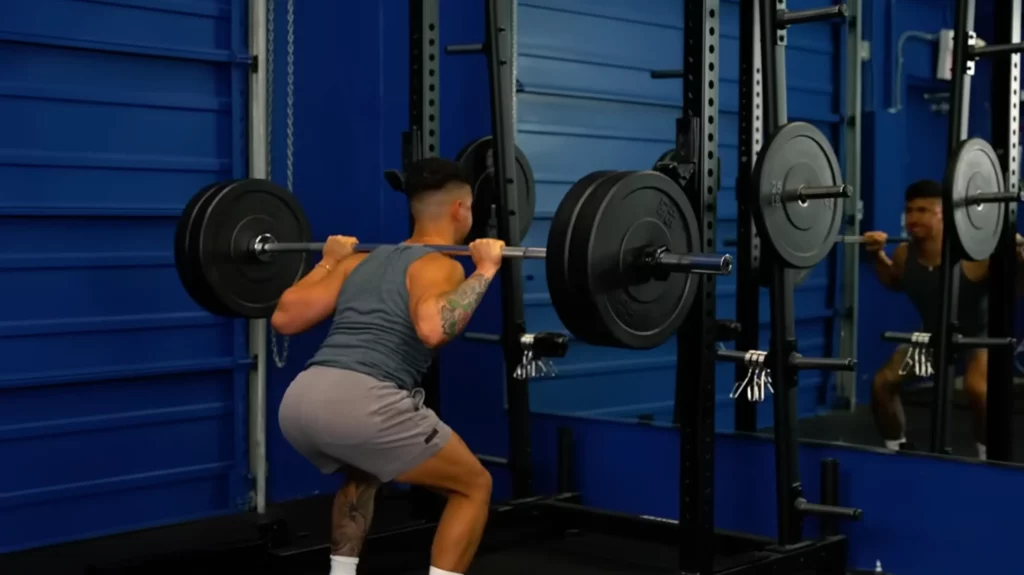
Equipment needed: Squat rack and barbell
Preferentially activates: Glutes and quads
The classic legs-builder you should include in every lower body workout. That said, the BB back squat can be challenging to get right.
So, if you struggle with discomfort (in the shoulders, knees, or lower back) and/or with progressive overload on the exercise (you’ve been stuck at the same weight for, like, forever), I highly recommend taking the time to learn how to perform the BB back squat properly; for your anatomy.
#2: Conventional Barbell Deadlift
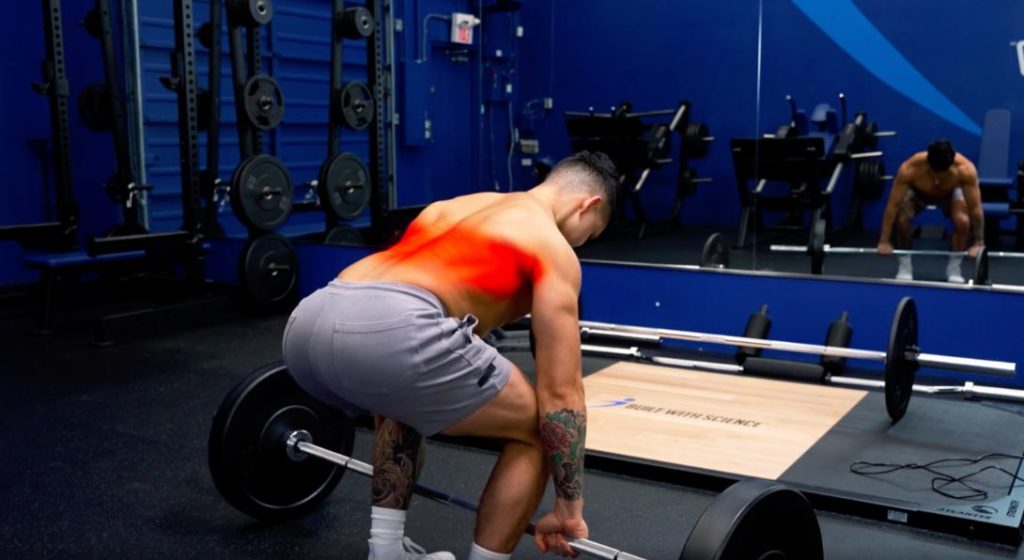
Equipment needed: Barbell
Preferentially activates: Back, hamstrings, glutes
When I tested the most popular back exercises using an EMG machine, the BB deadlift elicited the highest activation in all the back muscles.
This is likely due to the deep stretch the back muscles are put through at the bottom position. Interested to learn more? I go into the specifics of how stretch-focused training stimulates more muscle growth here.
Also, all the calorie-burning potential the BB deadlift affords you is likely to go down the drain if your form sucks and you can’t move much weight or, worse, get injured.
Learn the proper (conventional) deadlift form here.
#3: Barbell Hip Thrusts
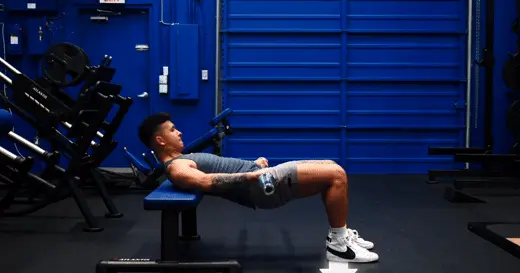
Equipment needed: Bench, barbell, and padding
Preferentially activates: Glutes
The bigger a muscle is, the more energy it consumes.
Now, what's the largest muscle in your body? That's right: it's your gluteus maximus. So, following that line of logic, one of the best compound exercises for weight loss will have to be the BB hip thrusts.
Check out the crucial tips Bret Contreras ("The Glute Guy") shared about performing the glutes-perking hip thrusts here.
#4: Barbell Bent-Over Row
Equipment needed: Squat rack and barbell
Preferentially activates: Back and biceps
Use a wide, overhand grip to work the most muscle groups possible with the BB bent-over row.
Compared to a narrow, underhand grip, doing so will likely help you see higher activation in the traps, rear delts, and overall upper back musculature.
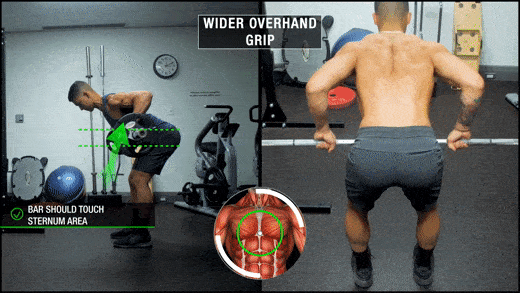
You could also consider doing the chest-supported version — e.g., chest-supported dumbbell rows (upper-back-focused) — to avoid the situation where your lower back gives out before you’ve meaningfully worked your back muscles.
#5: Pull-Ups
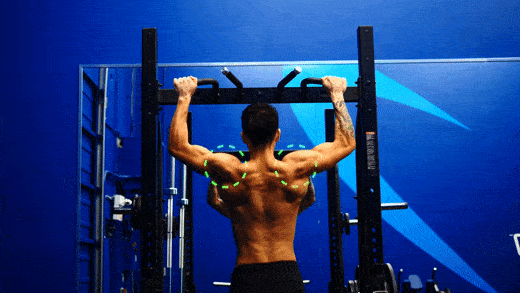
Equipment needed: Pull-up bar
Preferentially activates: Back and biceps
Remember the article where I tested the most popular back exercises?
Yep, that was where I confirmed that the pull-ups are fantastic at activating the lats. And, of course, that’s not the only muscle group it works.
A 2017 EMG study shows it also works the brachioradialis, middle and lower traps, and infraspinatus.
That said, pull-ups are only one of the best compound exercises for weight loss if you can do them in the first place. So, thankfully, I've got this free progression plan that’ll take you from 0 to 10+ pull-ups — fast.
#6: 15-Degree Incline Dumbbell Press
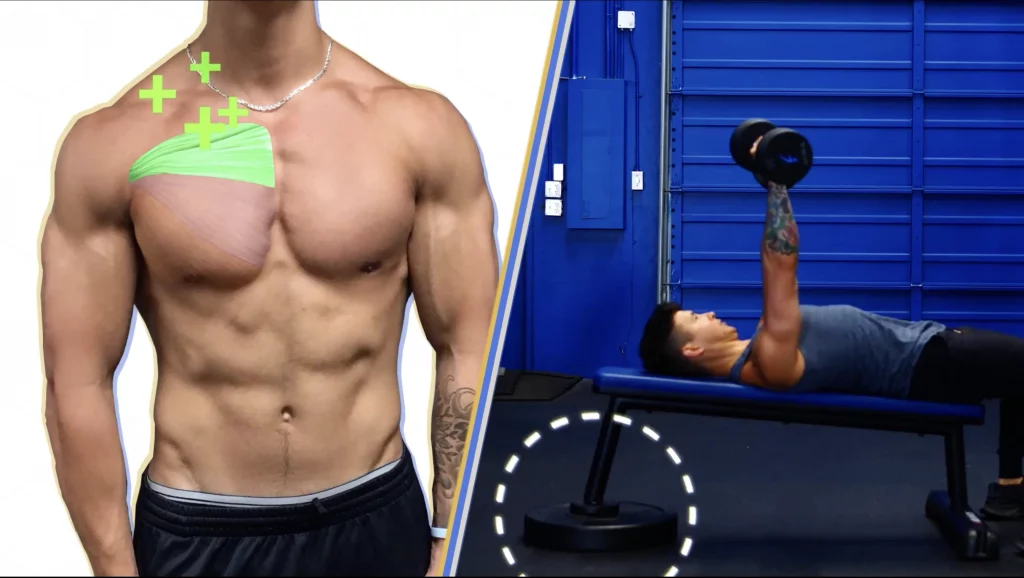
Equipment needed: Bench and dumbbells
Preferentially activates: Upper and middle chest
Only do flat presses?
Then you’re missing out on those precious upper chest gains.
Which is why I recommend including the 15-degree incline dumbbell press in your workouts (FYI, it doesn’t just activate the upper chest well, but also the entire chest region).
Beyond being a more comfortable set-up for most people in the gym, I also prefer the dumbbells to the barbell because it allows for a deeper stretch (remember, in most cases, more stretch = more growth) at the bottom range of the movement.
A 15-degree incline is just 1 or 2 notches up from flat on the bench.
#7: Slight Decline Dumbbell Press
Equipment needed: Bench and dumbbells
Preferentially activates: Lower chest
The 15-degree incline dumbbell press takes care of your upper and middle chest.
But what about the lower portion that arguably plays the most crucial role in minimizing the appearance of chest fat (since it helps "push up" the chest region, counteracting unwanted sagginess)?
That's where the decline dumbbell press comes in.
As my chest EMG article mentioned, you prop up the front of your bench with a weight plate to “create” the decline.
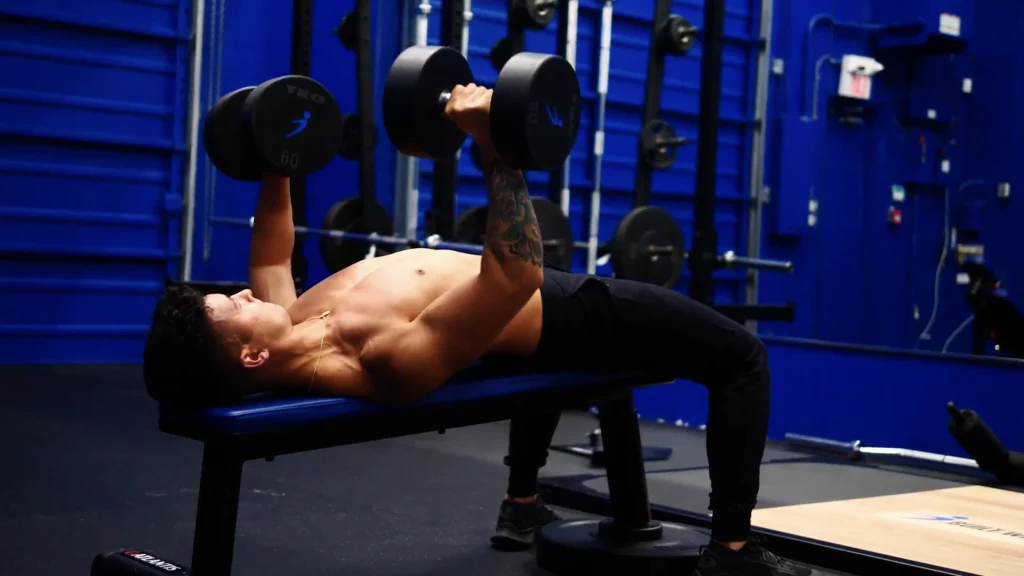
#8: Standing Barbell Overhead Press
Equipment needed: Barbell and squat rack
Preferentially activates: Shoulders (front delts)
As much as you’re looking to lose weight, I’d bet you’re also interested in building a well-rounded physique (because #aesthetics).
And, so far, we haven’t really hit your shoulders all that much … which is where the standing BB overhead press comes in. It’s truly one of the best shoulder exercises you could do to grow your front delts.
As always, remember to press in the scapular plane.
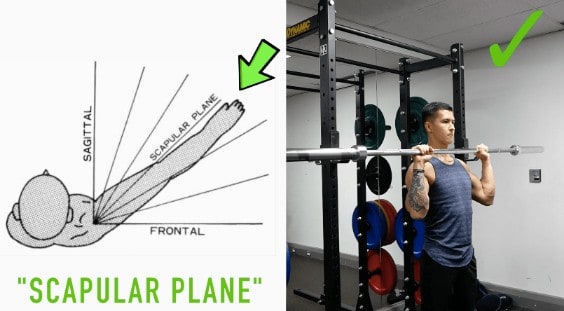
But wait. What if you struggle with the overhead press?
I cover the 2 most common restrictions preventing most people from overhead pressing or progressing on the movement — and the associated workarounds in a past article. Check it out here to (finally) fix your overhead press.
#9: Wide-Grip Upright Row
Equipment needed: Barbell
Preferentially activates: Shoulders (side delts)
Weight loss isn't the "ultimate" goal for most of us.
Sure, shedding excess fat is a good step, but there's not much point if you're going to look like a smaller version of yourself.
Instead, you likely want an impressive-looking physique — which often calls for wider, thicker shoulders. And for those, you'll need side delts. That's where wide-grip upright rows come in.
To perform them safely:
- Widen your grip to about 2x shoulder width.
- Raise your elbows only up to the level of your shoulders.
- Ensure that your hands are level with your elbows (instead of below them) at the top position.
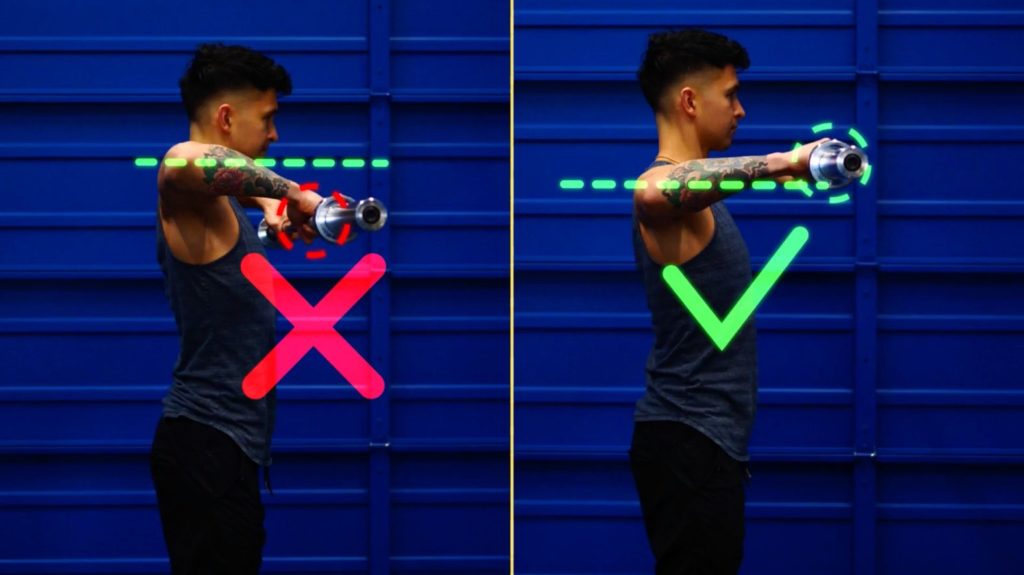
Learn how to lower your shoulder injury risk when performing this movement here.
#10: Cable Wide Grip Rear Delt Row
Equipment needed: Cable machine
Preferentially activates: Side and rear delts
Speaking of injury … you cannot afford to neglect your rear delts.
In addition to "rounding out" your shoulders, rear delts help stabilize your shoulder joint and support overall healthy shoulder function.
Here are 2 tips to maximize rear delts activation on the movement: 1) use a wider handle attachment and 2) grip the bar wide enough to pull your elbows back behind your body at a 45-degree angle relative to your torso.
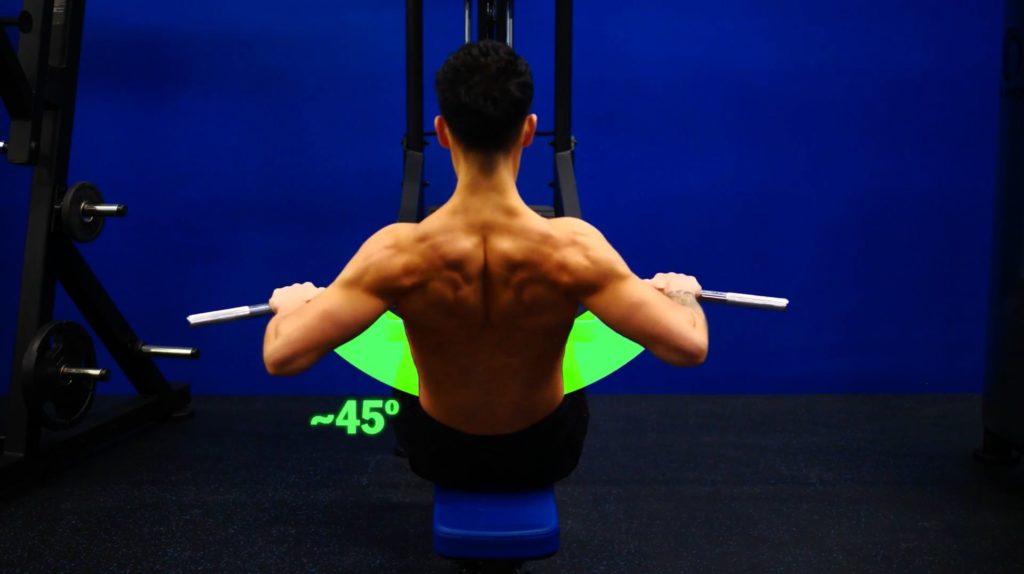
How To Put These Exercises Together For A Weight Loss Workout
Train thrice weekly? Here are 3 sample full-body sessions you could either adapt partially or in full to your routine.
Workout A
Barbell Back Squat (3 sets, 8 to 12 reps)
Barbell Bent-Over Row (3 sets, 8 to 12 reps)
15-Degree Incline Dumbbell Press (3 sets, 10 to 15 reps)
Workout B
Conventional Barbell Deadlift (3 sets, 6 to 8 reps)
Pull-Ups (3 sets, 8 to 12 reps)
Standing Barbell Overhead Press (3 sets, 8 to 12 reps)
Workout C
Barbell Hip Thrusts (3 sets, 8 to 12 reps)
Decline Dumbbell Press (3 sets, 8 to 12 reps)
Cable Wide Grip Rear Delt Row (3 sets, 10 to 15 reps)
Don’t (Just) Go Chasing Compound Exercises For Weight Loss
Do the compound exercises mentioned in this article, and … you'll lose weight?
No. Not if you're still in a calorie surplus (i.e., eating more calories than your body burns). Also, as mentioned earlier, chances are, "pure" weight loss isn't your goal.
You likely want to build muscle and lose fat at the same time.
This means you’d also need to look into optimizing your macronutrients and protein intake for muscle growth (amongst other things). Feeling overwhelmed?
If you'd like someone to take all that head-scratching optimization process off your hands, take our quiz below to find the best step-by-step training and nutrition program for you and your body (you just need to do the implementation!):
Click the button below to take my analysis quiz to discover the best program for you:
↓


